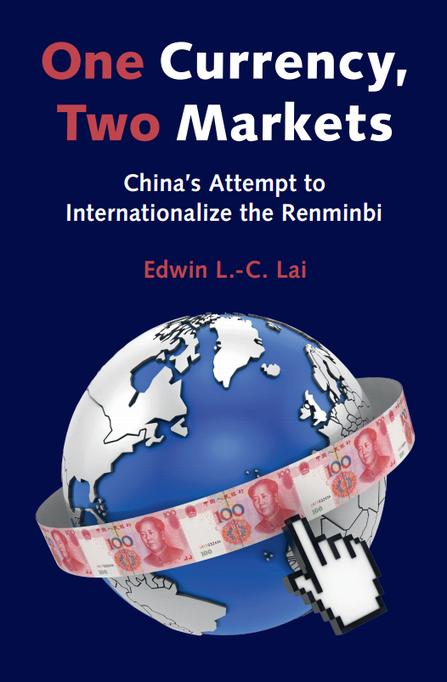Edwin L.-C. Lai
Cambridge University Press, 2021 Table of Contents 1. Introduction 2. China's aversion to a floating exchange rate 3. Why does China want to internationalize the RMB? 4. China's strategy of internationalizing the RMB 5. The importance of capital account liberalization 6. The importance of financial sector reform 7. The importance of the offshore RMB market 8. The potential of the RMB as a payment currency 9. The prospects of RMB internationalization. |
Book Description
This book is for anyone who is interested in the economic analysis of the future of the international monetary system and the USD, and the rising importance of the RMB. It points out the unsustainability of the dollar standard in the long run, that China has unique incentives to internationalize its currency, and how Hong Kong plays an important role. It explains the real reasons for China to internationalize its currency, including using external commitments to force financial sector reforms ('daobi' in Chinese). It applies economic theories accessible to laymen to establish that financial development and openness are crucial for RMB internationalization to succeed, and that greater exchange rate volatility is inevitable due to the 'open-economy trilemma'. Employing the 'gravity model', the book predicts quantitatively that the RMB is likely to be a distant third payment currency after the USD and the euro, but surpassing the Japanese yen in the next decade.
This book is for anyone who is interested in the economic analysis of the future of the international monetary system and the USD, and the rising importance of the RMB. It points out the unsustainability of the dollar standard in the long run, that China has unique incentives to internationalize its currency, and how Hong Kong plays an important role. It explains the real reasons for China to internationalize its currency, including using external commitments to force financial sector reforms ('daobi' in Chinese). It applies economic theories accessible to laymen to establish that financial development and openness are crucial for RMB internationalization to succeed, and that greater exchange rate volatility is inevitable due to the 'open-economy trilemma'. Employing the 'gravity model', the book predicts quantitatively that the RMB is likely to be a distant third payment currency after the USD and the euro, but surpassing the Japanese yen in the next decade.
- Examines the economics behind RMB internationalization using an accessible theory to help readers gain an in depth understanding
- Demonstrates the potential of the RMB as an international medium of exchange through rigorous quantitative economic analysis
- Includes detailed coverage of the offshore RMB market (especially that in Hong Kong) and the new international payment system of China
Look Inside
|
|
|
|
| ||||||||||||||||||||||||||||||
Cambridge University Press websites for this book:
https://www.cambridge.org/core/books/one-currency-two-markets/7C5037905474C36C85896DD732A2ACF4#
* You can use the promotion code to get 20% discount (till the end of 2022).
https://www.cambridge.org/core/books/one-currency-two-markets/7C5037905474C36C85896DD732A2ACF4#
* You can use the promotion code to get 20% discount (till the end of 2022).
Copyright © Edwin Lun-Cheung Lai 2021

